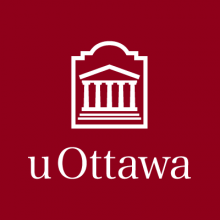A coalition of scientists, funders, publishing societies and librarians believes that the formation of an international observatory to study predatory journals will lead to improved advice on how to tackle them.
The initiative aims to fill the void left by the closure three years ago of Jeffrey Beall’s blacklist of predatory publishers. Since then, many others have set up their own blacklists and checklists, but there is “a lack of unity across the community about what predatory journals are”, said Agnes Grudniewicz, assistant professor at the Telfer School of Management at the University of Ottawa.
The coalition’s biggest achievement so far is to create a consensus definition of predatory journals. It defines predatory journals and publishers as “entities that prioritise self-interest at the expense of scholarship” and “are characterised by false or misleading information, deviation from best editorial and publication practices, a lack of transparency, and/or the use of aggregate and indiscriminate solicitation practices”.
Even using the term “predatory publishers”, coined by Professor Beall, then the librarian at the University of Colorado Denver in 2010, was a challenge, said the authors. In a Nature editorial last month, the group explains how some believe “deceptive”, “dark”, “illegitimate” or “acting in bad faith” are better terms than “predatory”, given that some authors are aware of the low quality of these outlets when they submit their manuscripts.
“Confusion about the nature of the threat [made] it impossible to develop successful strategies and interventions to target it,” Dr Grudniewicz, lead author of the Nature paper, told Times Higher Education.
Creating an international observatory – potentially funded by research funders, charities, publishers and research institutions – was a less contentious solution than relying on blacklists or “whitelists” of approved providers, said Dr Grudniewicz. Research led by Michaela Strinzel, from the Swiss National Science Foundation, found that 34 journals listed as predatory by Professor Beall appeared on an approved list of titles run by the Directory of Open Access Journals (DOAJ), while 31 DOAJ titles were deemed predatory by subscription service Cabells.
However, the coalition’s definition does not consider the issue of peer review practices, which, for some, are the signature feature of those happy to accept poor-quality work in exchange for a fee.
“Peer review is an important component of legitimate publishing, but it was not [something on which] the definition reached consensus,” said Dr Grudniewicz.
“This is because peer review is imperfect: even legitimate journals can lack quality in their peer review and we know they are working on it.”
POSTSCRIPT:
Print headline: New observatory seeks predatory journals insight
Register to continue
Why register?
- Registration is free and only takes a moment
- Once registered, you can read 3 articles a month
- Sign up for our newsletter
Subscribe
Or subscribe for unlimited access to:
- Unlimited access to news, views, insights & reviews
- Digital editions
- Digital access to THE’s university and college rankings analysis
Already registered or a current subscriber? Login










